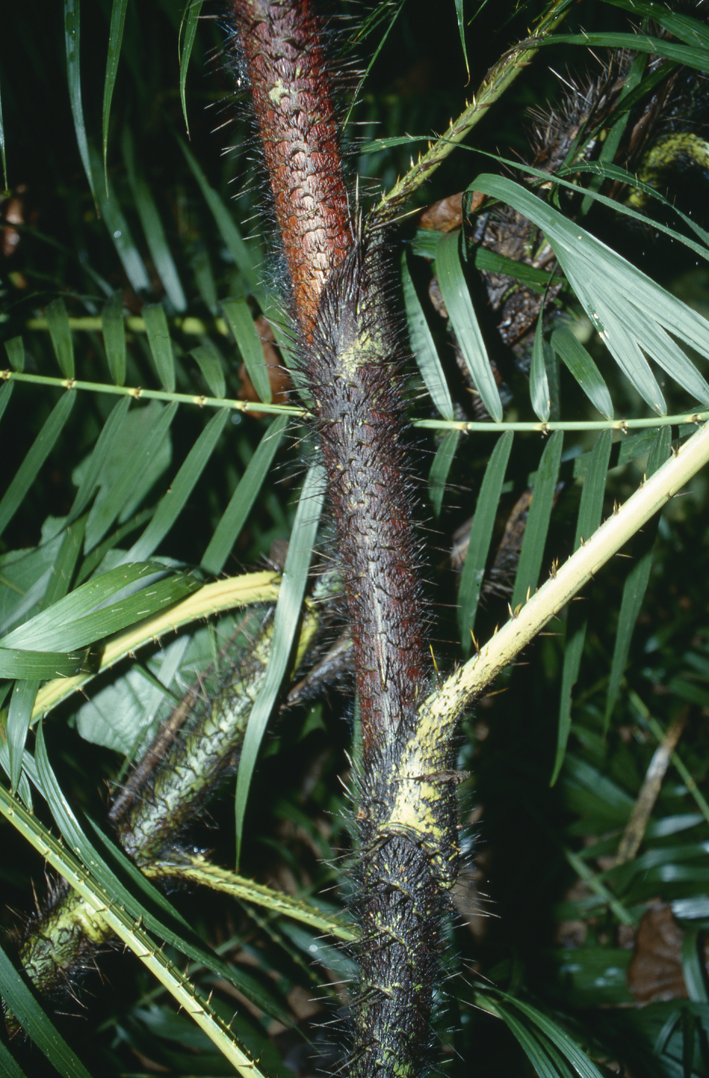- Acanthophoenix
- Acrocomia
- Actinokentia
- Actinorhytis
- Adonidia
- Aiphanes
- Allagoptera
- Ammandra
- Aphandra
- Archontophoenix
- Areca
- Arenga
- Asterogyne
- Astrocaryum
- Attalea
- Bactris
- Balaka
- Barcella
- Basselinia
- Beccariophoenix
- Bismarckia
- Borassodendron
- Borassus
- Brassiophoenix
- Burretiokentia
- Butia
- Calamus
- Calyptrocalyx
- Calyptrogyne
- Calyptronoma
- Carpentaria
- Carpoxylon
- Caryota
- Ceratolobus
- Ceroxylon
- Chamaedorea
- Chamaerops
- Chambeyronia
- Chelyocarpus
- Chuniophoenix
- Clinosperma
- Coccothrinax
- Cocos
- Corypha
- Cryosophila
- Cyphokentia
- Cyphophoenix
- Cyphosperma
- Deckenia
- Desmoncus
- Dictyocaryum
- Drymophloeus
- Dypsis
- Elaeis
- Eleiodoxa
- Eremospatha
- Eugeissona
- Euterpe
- Gaussia
- Geonoma
- Guihaia
- Hedyscepe
- Hemithrinax
- Howea
- Hyophorbe
- Hyospathe
- Hyphaene
- Iriartea
- Iriartella
- Itaya
- Jailoloa
- Johannesteijsmannia
- Juania
- Jubaea
- Jubaeopsis
- Kentiopsis
- Kerriodoxa
- Korthalsia
- Laccospadix
- Laccosperma
- Lanonia
- Latania
- Lemurophoenix
- Leopoldinia
- Lepidocaryum
- Lepidorrhachis
- Leucothrinax
- Licuala
- Linospadix
- Livistona
- Lodoicea
- Lytocaryum
- Manicaria
- Manjekia
- Marojejya
- Masoala
- Mauritia
- Mauritiella
- Maxburretia
- Medemia
- Metroxylon
- Myrialepis
- Nannorrhops
- Nenga
- Neonicholsonia
- Neoveitchia
- Nephrosperma
- Normanbya
- Nypa
- Oenocarpus
- Oncocalamus
- Oncosperma
- Orania
- Oraniopsis
- Parajubaea
- Pelagodoxa
- Phoenicophorium
- Phoenix
- Pholidocarpus
- Pholidostachys
- Physokentia
- Phytelephas
- Pigafetta
- Pinanga
- Plectocomia
- Plectocomiopsis
- Podococcus
- Pogonotium
- Ponapea
- Prestoea
- Pseudophoenix
- Ptychococcus
- Ptychosperma
- Raphia
- Ravenea
- Reinhardtia
- Retispatha
- Rhapidophyllum
- Rhapis
- Rhopalostylis
- Roscheria
- Roystonea
- Sabal
- Sabinaria
- Salacca
- Saribus
- Satakentia
- Satranala
- Schippia
- Sclerosperma
- Socratea
- Solfia
- Sommieria
- Syagrus
- Synechanthus
- Tahina
- Tectiphiala
- Thrinax
- Trachycarpus
- Trithrinax
- Veitchia
- Verschaffeltia
- Voanioala
- Wallaceodoxa
- Wallichia
- Welfia
- Wendlandiella
- Wettinia
- Wodyetia
- Zombia
- x Jubautia splendens
- ?? Acoelorrhaphe
- ?? Bentinckia
- ?? Brahea
- ?? Clinostigma
- ?? Colpothrinax
- ?? Copernicia
- ?? Cyrtostachys
- ?? Dictyosperma
- ?? Dransfieldia
- ?? Heterospathe
- ?? Hydriastele
- ?? Iguanura
- ?? Incertae sedis & excluded names
- ?? Loxococcus
- ?? Micronoma
- ?? Paripon
- ?? Pritchardia
- ?? Rhopaloblaste
- ?? Serenoa
- ?? Washingtonia

Distribution
INDIA (West Bengal, Sikkim, Assam, Meghalaya), BANGLADESH, BHUTAN. (Basu, S.K. 1992: Rattans (canes) in India. A Monographic Revision)A
Biology And Ecology
- In the eastern Himalaya it is common in the mixed forests up to 1000m. (Basu, S.K. 1992: Rattans (canes) in India. A Monographic Revision)A
Common Name
- Golak bet, Cheka bet, Dudhia bet, Dangri bet, Golla bet. (Basu, S.K. 1992: Rattans (canes) in India. A Monographic Revision)A
Uses
- Cane is mainly used for making rough baskets, chair frames etc. Tribal people use it for tying fences and for making canes bridges. (Basu, S.K. 1992: Rattans (canes) in India. A Monographic Revision)A
Description
- High climbing rattan; stem with lealshcath 3 - 4 cm in diameter; intemodes 15-20 cm long, longitudinally striatc. Leaves cirrate; leafblade excluding cirrus to 3 m long; leafsheath pale yellow to yellowish green, covered with brown scurf and armed with thin flattened, deep brown to blackish needle-like spines in series or scattered; petiole 15 - 20 cm long, 5 cm broad at widest part; scurfy outside, flat to slightly convex above, armed below with strong digitate claws and straight spines at margins; leaflets equidistant, alternate to suboppos-ite; largest leaflets little above the base, 40 - 50 cm long or in some vigorous specimens 50 - 70 cm long, 2 - 4 cm broad at widest part; ultimate leaflets rudimentary. Inflorescence sub-axillary or inserted above the mouth of their sheaths, not very broadly fusiform after opening; peduncle 3 - 6 cm long; outer bract tapering into a long beak, reddish to reddish brown in colour. Flower branches densely scurfy at base. Male flowers oblong in bud, 5 x 2.5 mm; calyx cupular, hairy at tips; corolla with 3-obIanceolate petals; stamens 6, anthers subulate, connate and thickened at base. Rachillae in female inflorescence upto 8 cm long, sinuous; female flowers 6 - 7 in number on each side; each 5 - 5.5 mm long; calyx cupular, truncate; corolla distinctly veined, with deeply divided lanceolate petals; ovary ovoid to globose, stigmas 3, pappillose inside. Fruit globose, 1.8 cm in diameter; fruit scales in 18 longitudinal series, yellowish brown in colour with distinct darker marginal lines; seed globose, about 10mm in diameter, minutely pitted; pits filled with dark subresinous substances; endosperm ruminate. (Basu, S.K. 1992: Rattans (canes) in India. A Monographic Revision)A
Cultivation
- Experimental cultivation exists in north Bengal. Cultivated in the Indian Botanic Garden, Howrah and in Forest Research Institute, Chittagong, Bangladesh. (Basu, S.K. 1992: Rattans (canes) in India. A Monographic Revision)A
- Log in to post comments

